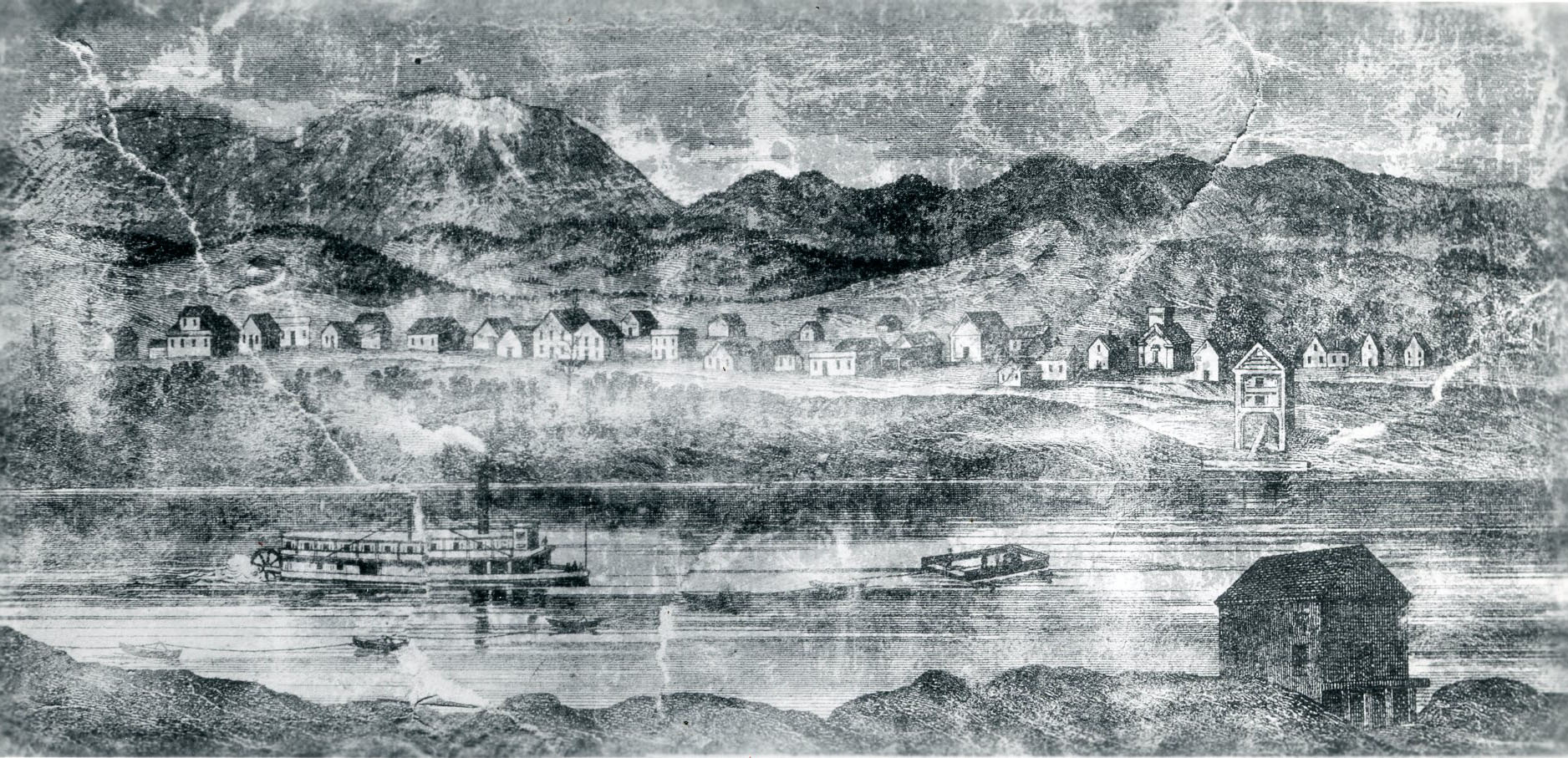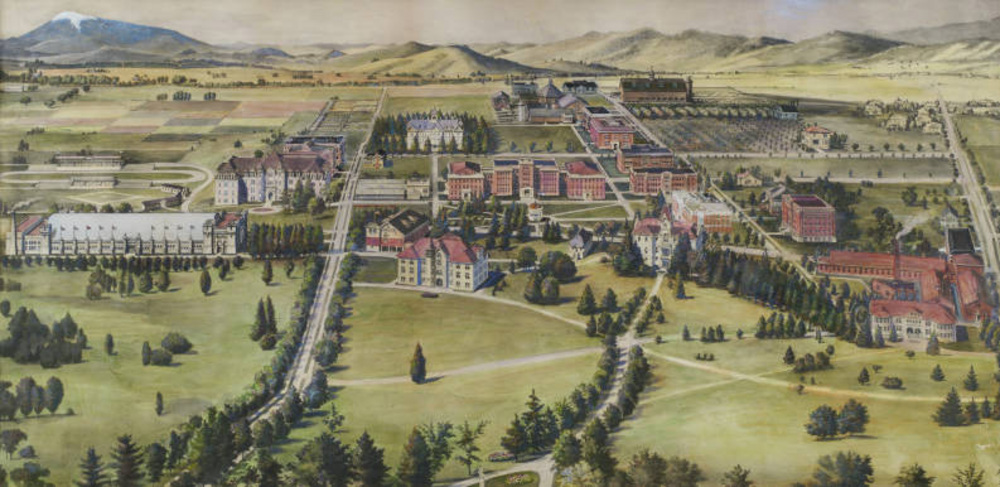Emile Francis Pernot was one of Oregon's most influential bacteriologists and contributed several decades of research to the cure of tuberculosis. Among other professional positions, he was professor of bacteriology at Oregon Agricultural College (1899-1910) and served as the bacteriologist for the state of Oregon (1903-1913 and 1916-1923).
Pernot was born in New York City in 1859, one of four sons of A.D. and Emile Caroline Pernot. His maternal grandfather, a native of France and a skilled machinist, had made the first sewing machine needles for Elias Howe, inventor of the sewing machine.
Pernot was educated in Ohio and moved to Philadelphia, where he studied bacteriology. For a while, he did office work in the oil fields. He moved to Corvallis, Oregon, in 1889 at the request of his brother Eugene, who had established a photography studio there. Pernot’s other siblings also settled in the area. Henri Pernot was the first physician and surgeon in Corvallis, Charles Pernot established fruit orchards in the area, and Lucie Pernot operated a gift store in Corvallis.
In 1890, Pernot was hired to teach photography and engraving at the Oregon Agricultural College (OAC) (now Oregon State University). He also took photographs for publications of the college’s experiment stations.
In 1892, Pernot married Edith Jane Coote of Corvallis. Her grandparents had lived close to the estate of Sir Charles Darwin in England, and her grandfather, George Coote, had worked in Darwin’s greenhouses before Coote and his family moved to Corvallis. Coote later became professor of floriculture and gardening, and he founded the Horticulture Department at OAC.
Pernot and his wife had a son, Peter, two daughters, Mabel and Aimee, and twins who died at birth.
In 1899, Pernot was appointed professor of bacteriology at OAC to teach its first bacteriology course. He later explained that his growing interest in bacteriology came from his taking experiment station photographs through a microscope. For ten years, he was the only faculty member in the field of bacteriology. His major field of study was preserving cheeses, and he started a lifetime interest in tuberculosis research.
Pernot was recognized with an honorary Master of Science degree from the college in 1903. Working with other college staff, Pernot developed for the Hawaiian Pineapple Company a method of using temperature and pressure to eliminate a bacterial problem damaging canned pineapple. He also participated in research using electric currents to sterilize milk, the production of six different flavors of cheese, and the elimination of off-flavors of butter caused by bacteria or other factors.
His growing reputation in the field of bacteriology led to his appointment in 1903 as state bacteriologist by Gov. George E. Chamberlain. In this role, he worked with local government, hospitals, and physicians in studying the growth and characteristics of microorganisms and how they affect people’s health. He served in that role until 1913, when he left the position; he returned in 1916 and served until 1923.
Pernot resigned from OAC in 1910 to establish the Portland Bacteriological Laboratory and to become bacteriologist for the City of Portland, a position created for him. There, he continued his work in the field of bacteria and human health. In 1915, he renamed his laboratory the Pernot Laboratories, which he operated until 1923. In 1918 when the worldwide flu epidemic struck, Pernot was quarantined in his laboratory, where he worked long hours making vaccine.
At North Pacific Dental College, Pernot became a part-time instructor, lecturing on bacteriology, and he later joined the faculty full-time. After the death of his first wife in 1921, he married Mary E. Shaver in 1923.
For thirty-five years, Pernot researched tuberculosis, leading to the discovery of the bacillus responsible for tuberculosis in poultry. For this discovery, he received an Award of Honor at The Hague in The Netherlands. In early 1927, he announced he was close to discovering a cure for tuberculosis; he contracted a severe cold within a week and was hospitalized. Four days later, on February 2, 1927, Pernot died in Portland at the age of sixty-seven.
Before her death in 1991, Pernot’s surviving daughter, Mabel E. Pernot, made a major contribution to the Oregon State University Department of Microbiology to support teaching, research, and the publication of the department’s history, Under the Microscope, during the department’s centennial year.
-
![]()
Emile Pernot, c.1890.
Courtesy Oregon State University Libraries
-
![]()
Emile Pernot, c.1880.
Courtesy Oregon State University Libraries
-
![]()
Plant tissue sample microphotographs by Emile Pernot, c.1895.
Courtesy Oregon State University Libraries
-
![]()
Pernot family home in Portland, c.1910.
Courtesy Oregon State University Libraries
Related Entries
-
![Corvallis]()
Corvallis
Nestled on the west side of the mid-Willamette River, Corvallis is domi…
-
![Oregon State University]()
Oregon State University
Oregon State University (OSU) traces its roots to 1856, when Corvallis …
Map This on the Oregon History WayFinder
The Oregon History Wayfinder is an interactive map that identifies significant places, people, and events in Oregon history.
Further Reading
Fisher, Jim. Under the Microscope: One Hundred Years of Microbiology at Oregon State University. Corvallis: Oregon State University Department of Microbiology, 1998.
Lee, Jennifer A. An Oral History with Mabel Pernot (Unpublished). Oral History Program, Horner Museum, Oregon State University, Corvallis, 1986.






